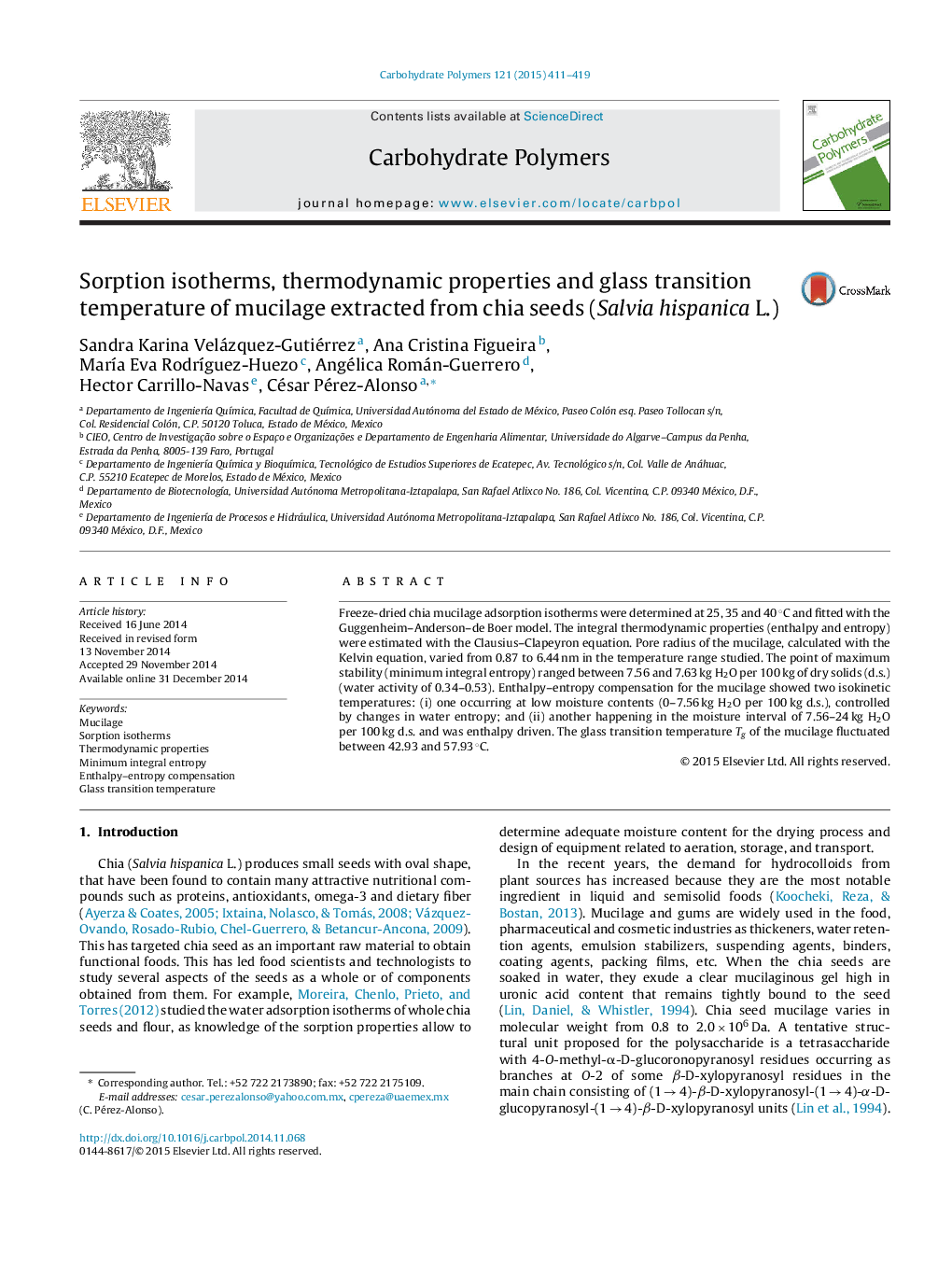| Article ID | Journal | Published Year | Pages | File Type |
|---|---|---|---|---|
| 1383281 | Carbohydrate Polymers | 2015 | 9 Pages |
•The sorption isotherms of freeze-dried chia mucilage presented a sigmoidal shape.•The GAB equation was useful for modelling moisture sorption of the mucilage.•The pore radius of the mucilage varied from 0.87 to 6.44 nm.•The minimum integral entropy was in the range of 0.34–0.53 of aW.•The Tg of the mucilage was found between 42.93 and 57.93 °C.
Freeze-dried chia mucilage adsorption isotherms were determined at 25, 35 and 40 °C and fitted with the Guggenheim–Anderson–de Boer model. The integral thermodynamic properties (enthalpy and entropy) were estimated with the Clausius–Clapeyron equation. Pore radius of the mucilage, calculated with the Kelvin equation, varied from 0.87 to 6.44 nm in the temperature range studied. The point of maximum stability (minimum integral entropy) ranged between 7.56 and 7.63 kg H2O per 100 kg of dry solids (d.s.) (water activity of 0.34–0.53). Enthalpy–entropy compensation for the mucilage showed two isokinetic temperatures: (i) one occurring at low moisture contents (0–7.56 kg H2O per 100 kg d.s.), controlled by changes in water entropy; and (ii) another happening in the moisture interval of 7.56–24 kg H2O per 100 kg d.s. and was enthalpy driven. The glass transition temperature Tg of the mucilage fluctuated between 42.93 and 57.93 °C.
